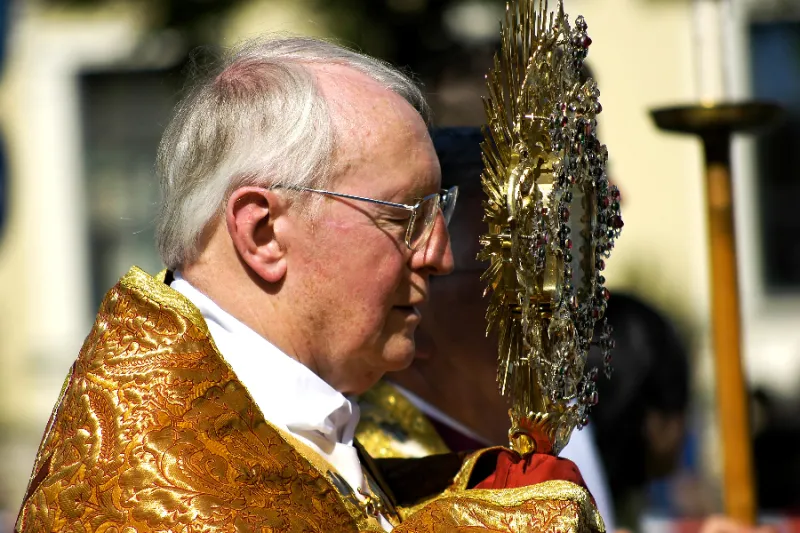
Munich, Germany, Jan 25, 2022 / 12:00 pm (CNA).
Cardinal Friedrich Wetter, archbishop of Munich and Freising from 1982 to 2007, apologized on Tuesday for mishandling an abuse case highlighted in a more than 1,000-page report on the archdiocese in southern Germany.
In a statement issued on Jan. 25, the 93-year-old cardinal said he was filled “with shame and sadness” that he had not fulfilled his duty “to protect children and young people to the necessary extent” in the case of a cleric identified in the German media only as “Priest H.”
Priest H. came to the archdiocese as an already identified abuser, reported CNA Deutsch, CNA’s German-language news partner. He was permitted to engage in pastoral ministry and committed further offences.
“Through theology and canon law, powers in the Catholic Church are concentrated almost exclusively on the local bishop. This reflects a personal responsibility that cannot be delegated,” Wetter said.
“For my part in the inadequate handling of the H. case, but also of other reports and cases of abuse during my time in office, I must therefore also accept personal responsibility and I apologize.”
The report on the handling of abuse cases in the Archdiocese of Munich and Freising, published on Jan. 20, accused the emeritus archbishop of mishandling 21 cases in his more than 24 years in charge.
The cardinal, who was interviewed for the report by the Munich law firm Westpfahl Spilker Wastl, took issue with parts of the study.
He said: “In the press I am accused of ‘misconduct in 21 cases.’ In fact, I was questioned by the law firm about 21 people. I gave my answer to each person.”
“As a result, the following facts emerged for me: In 6 cases, there was no abuse. In 8 cases, abuse was committed, but not during my term of office and/or my area of responsibility. Abuse in 2 cases was committed by religious who were immediately sent back to their respective orders.”
“1 case involved a priest who had behaved incorrectly and uploaded child pornography on his computer. I suspended him immediately. In 1 case, I learned of the abuse at the end of my tenure. In this case, charges were filed. In one case, I did not learn of any abuse that had taken place. I only became aware of it through the investigation. One name was completely unknown to me.”
“These are the facts of the 21 cases, which in no way provide blanket proof of ‘misconduct in 21 cases.’”
Wetter succeeded the future Benedict XVI, who was known as Cardinal Joseph Ratzinger when he led the archdiocese from 1977 to 1982. The report accused Benedict of mishandling four cases, including that of Priest H., who arrived in the archdiocese in 1980.
The 94-year-old pope emeritus, who strongly denies cover-up allegations, sent 82 pages of observations to researchers compiling the report.
He apologized on Jan. 24 for mistakenly saying that he did not attend a disputed meeting where the transfer of Priest H. to the Munich archdiocese was discussed.
Wetter was succeeded by Cardinal Reinhard Marx, who was accused of mishandling two cases by investigators.
If you value the news and views Catholic World Report provides, please consider donating to support our efforts. Your contribution will help us continue to make CWR available to all readers worldwide for free, without a subscription. Thank you for your generosity!
Click here for more information on donating to CWR. Click here to sign up for our newsletter.




Leave a Reply